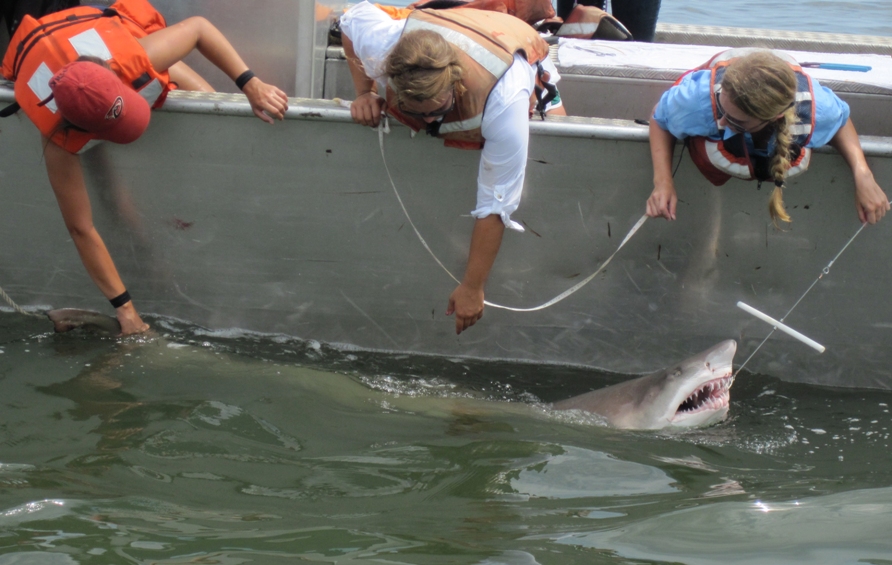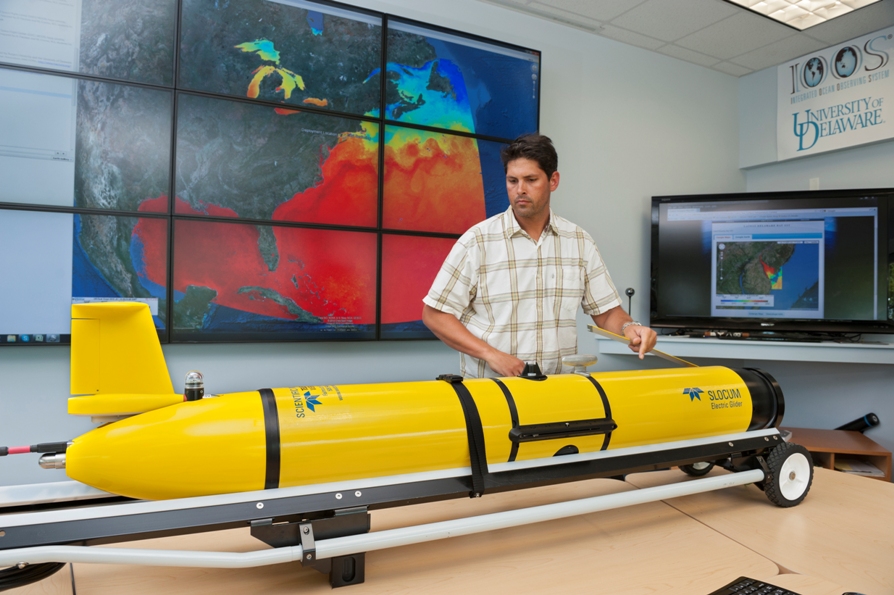
Underwater Robots Track Sharks Off US in a First

An underwater robot is helping to track sand tiger sharks off the East Coast of the United States.
It's the first time a device like this has been used to find and instantly report where sharks hang out and migrate to, according to a release from the University of Delaware, whose researchers are behind the project.
The robot looks like a yellow torpedo and is a type of glider typically used to test the chemistry of ocean waters. The research team installed acoustic receivers on the robot that can find and read tags that have been placed on sharks, and immediately relay that information to the researchers back on land via wireless signals.
This summer, the researchers, led by Matthew Oliver at the University of Delaware, caught sharks up to 9 feet (3 meters) in length and inserted a new type of tag in the animals that will provide more information than ever before. Called VEMCO mobile transceivers (VMTs), these tags can both transmit and receive information to communicate their location and listen for the "pings" of other sharks, fish or marine mammals outfitted with acoustic tags.
"It will tell us not only where it is, but who it's with," Oliver said. "It's like a social network for sharks."
Researchers have tagged about 500 sharks since 2006. Sharks are also tracked by stationary monitoring equipment along the East Coast that can recognize tags and report that a shark has passed by. The robot is superior because it can travel into the ocean and also test the chemistry of ocean water in which the sharks hang out and migrate, which tells researchers more about what conditions are favorable for the animals.
Sand tigers are the largest shark commonly found in Delaware's bay and coastal waters, and are of vital importance to the ecosystem since they are apex predators, without any predators of their own. Apex predators help balance ecosystems by eating the old, sick and weak, strengthening the prey populations by keeping their numbers at the right size for the environment.Very little is known about where sand tigers migrate to and what conditions are optimal for their survival.
Sign up for the Live Science daily newsletter now
Get the world’s most fascinating discoveries delivered straight to your inbox.
Sand tiger sharks are listed by the International Union for the Conservation of Nature as vulnerable, which is one step below endangered in their rankings.

Follow OurAmazingPlanet on Twitter @OAPlanet. We're also on Facebook and Google+.










